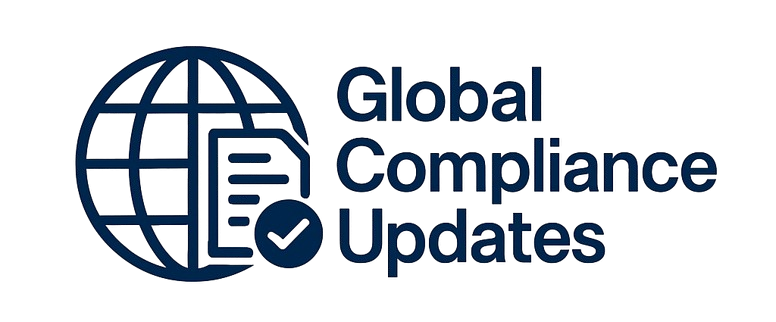Recent updates to the Nacha Operating Rules are further clarifying the Roles and Responsibilities of Third-Party Senders (TPSs) who use the ACH network. The purpose of the update is to explicitly identify the use of not just TPSs but also “nested” TPS.
The update is also addressing the requirement that a TPS conduct a Risk Assessment.
Both Rules become effective Sept 30, 2022, with a 6-month grace period for certain aspects of each Rule.
WHY SHOULD YOU ATTEND?
This session will help the attendee to identify a Third-Party Sender (TPS) and a “nested” TPS. In addition, we will cover the details needed in the agreements between all parties and what parties are based on their role. Discussion on the registration requirement for both the TPS and the nested TPS and what that means to the ODFI.
Details on what individual aspects of the Rules have a 6-month grace period and how this affects compliance with these two NEW Rule amendments.
AREA COVERED
Key points surrounding TPS Roles and Responsibilities and what they mean to the participants in the ACH Network will be detailed. In this session, the trainer will:
- Define a Third-Party Sender (TPS)
- Define a “nested” Third-Party Sender (TPS)
- List details of agreement requirements between which parties and why this is necessary for compliance
- Explain current TPS agreements in place and whether is re-papering required, guidance for moving forward
- Identify an ACH Risk Assessment and its purpose
- Outline who needs to do the ACH Risk Assessment based on this NEW Rule
- Detail certain aspects of the Rule that have a 6-month grace period
WHO WILL BENEFIT?
- Bank operations staff
- New employees in the payments industry
- Bank managers and payment professionals
- CEOs and CFOs
- Risk, Compliance, and Audit personnel
- Aspiring AAPs and current AAPs for AAP CE Credits
- Financial Institutions
- Banking Professionals
- Audit Persons
- ACH operations staff
- ACH Audit personnel
This session will help the attendee to identify a Third-Party Sender (TPS) and a “nested” TPS. In addition, we will cover the details needed in the agreements between all parties and what parties are based on their role. Discussion on the registration requirement for both the TPS and the nested TPS and what that means to the ODFI.
Details on what individual aspects of the Rules have a 6-month grace period and how this affects compliance with these two NEW Rule amendments.
Key points surrounding TPS Roles and Responsibilities and what they mean to the participants in the ACH Network will be detailed. In this session, the trainer will:
- Define a Third-Party Sender (TPS)
- Define a “nested” Third-Party Sender (TPS)
- List details of agreement requirements between which parties and why this is necessary for compliance
- Explain current TPS agreements in place and whether is re-papering required, guidance for moving forward
- Identify an ACH Risk Assessment and its purpose
- Outline who needs to do the ACH Risk Assessment based on this NEW Rule
- Detail certain aspects of the Rule that have a 6-month grace period
- Bank operations staff
- New employees in the payments industry
- Bank managers and payment professionals
- CEOs and CFOs
- Risk, Compliance, and Audit personnel
- Aspiring AAPs and current AAPs for AAP CE Credits
- Financial Institutions
- Banking Professionals
- Audit Persons
- ACH operations staff
- ACH Audit personnel
Speaker Profile
 Donna K Olheiser
Donna K Olheiser
Donna K Olheiser, AAP, is the vice president of Education Services and founder of Dynamic Mastership, LLC. Donna is an enthusiastic and energetic Certified Master Trainer with over 14 years’ training experience. She has designed and facilitated over 100 training sessions each year with her expertise being the rules for companies and financial institutions when processing specifically ACH electronic payments, then scheduling the training events to facilitate/deliver the material through a variety of venues (webinars, teleseminars, in-person workshops, including regional and national conferences). Donna has over 24 years of experience in the financial services industry which includes 9 years’ experience …
Upcoming Webinars

ChatGPT and Project Management: Leveraging AI for Project M…

Workplace Investigations 101: How to Conduct your Investiga…

Project Management for administrative professionals

The Monte Carlo Simulations in Excel for Risky Investments

Onboarding is NOT Orientation - How to Improve the New Empl…

Dealing With Difficult People: At Work & In Life

Transform Data into Insights: A Beginners Guide to Excel Pi…

Construction Lending And Real Credit Administration: Evalua…

Understanding Accounting for non - Accounting professionals

Harassment, Bullying, Gossip, Confrontational and Disruptiv…

New Form 1099 Reporting Requirements: 2025 Compliance Update

Human Error Reduction Techniques for Floor Supervisors

HR Metrics and Analytics 2025 - Update on Strategic Plannin…

Treating Employees Like Adults: Discipline versus Empowerme…

7 Ways To Beat Burnout: Without Quitting Your Job


How to Write Procedures to Avoid Human Errors

Handbook Overhaul 2026: Compliance, OBBB Act & Beyond

FDA Proposes Framework to Advance Credibility of AI Models

Ethical Terminations: Navigating Employee Exits with Legal …

Understanding EBITDA – Definition, Formula & Calculation

Project Management for Non-Project Managers - Scheduling yo…

4-Hour Virtual Seminar on Hidden Secrets of Selling & Marke…

Validation Statistics for Non-Statisticians

Data Integrity and Privacy: Compliance with 21 CFR Part 11,…


The Alphabet Soup: When the FMLA, ADA, COBRA, and Workers' …

Talent Management: How to Leverage AI and ChatGPT Tools for…


Offboarding with Care: Conducting Legal & Ethical Employee …

2-Hour Virtual Seminar on How to Conduct an Internal Harass…

Payments Fraud Detect & Prevent Check, ACH and P-Card Schem…

Managing Toxic & Other Employees Who have Attitude Issues



Reduce Stress in the Workplace: Effective Ways to Handle Co…





Excel - Pivot Tables - The Key To Modern Data Analysis and …
